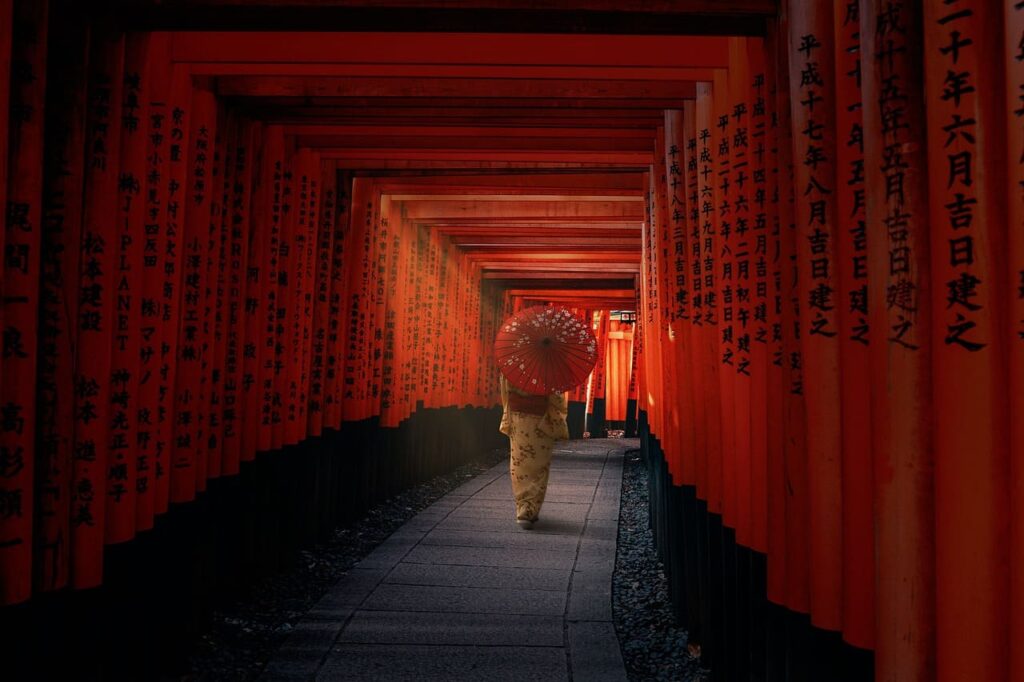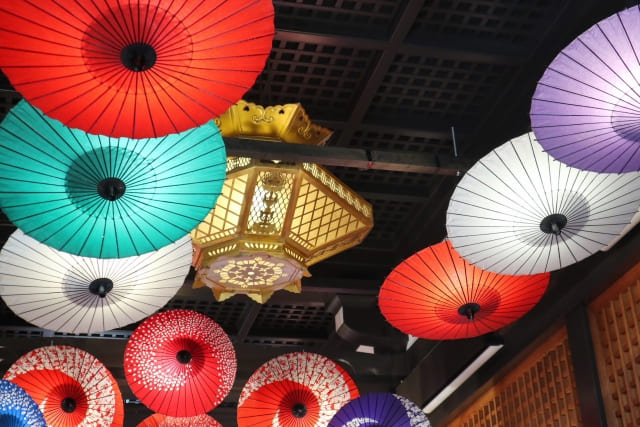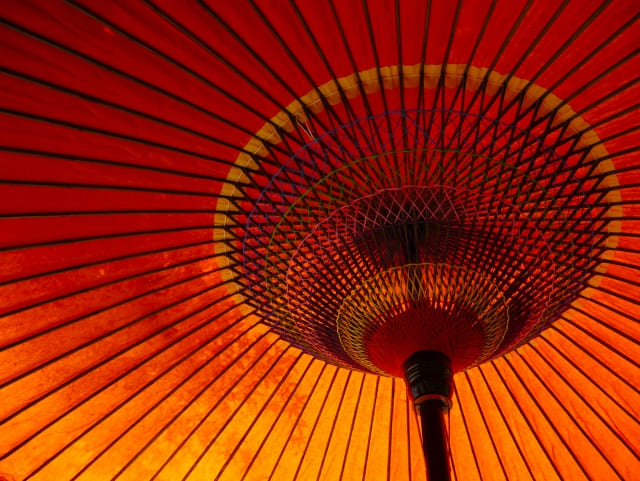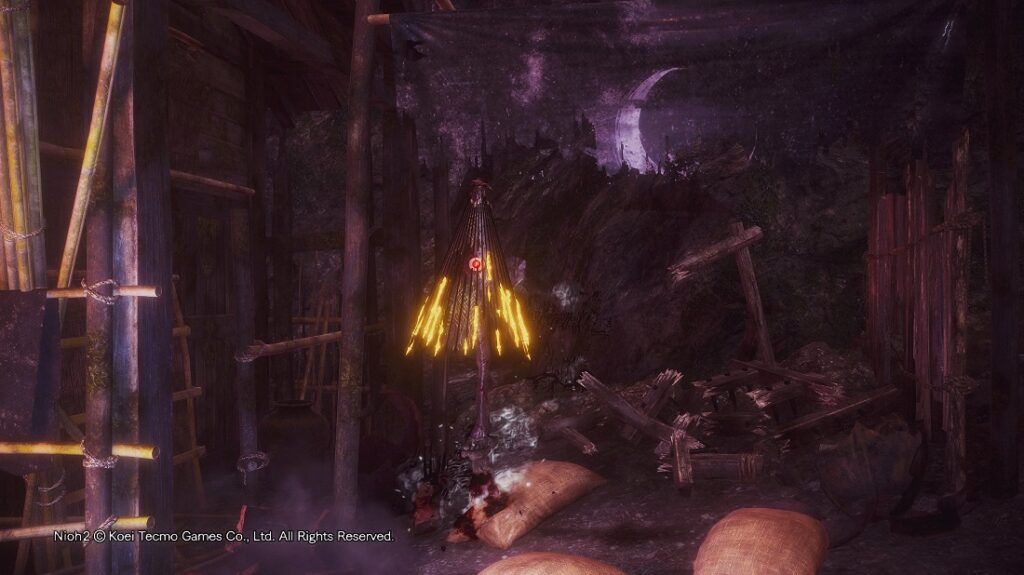Wagasa, the traditional Japanese umbrella, holds a rich history and continues to symbolize the beauty of Japan’s culture. Originally used for practical purposes, wagasa is now admired for its intricate craftsmanship and deep connection to Japanese traditions.
Moreover, wagasa has inspired stories of yokai, such as the famous “Karakasa Obake,” and appears in popular games like Nioh 2 and Rise of the Ronin.
In this article, we will explore the history, types, and cultural significance of wagasa, as well as their depiction in folklore and modern entertainment.
What Is a Wagasa?


I don’t know about Wagasa.
I’m curious…

I thought you were one of Wagasa!
But okay, let’s learn about your kind (Wagasa) together.

Sounds good!
The History of Wagasa

Wagasa was introduced to Japan during the Heian period, originally influenced by Chinese designs. At first, it was used as a sunshade by the aristocracy, but it became a popular rain gear in the Edo period. Made from bamboo and Japanese paper, wagasa evolved into a uniquely Japanese craft, admired for its beauty and functionality.
Why Wagasa Is Loved

Wagasa is cherished not only for its functionality but also for its aesthetic appeal. The translucent quality of Japanese paper creates a soft glow, and the sound of raindrops on the paper adds a soothing touch. It is an umbrella that appeals to all senses.
Main Types of Wagasa


Did you know that there are some different types of Wagasa?

I didn’t know.
Tell me more!
Bangasa

Bangasa is a sturdy, practical umbrella with a simple design, often used in everyday life.
Janomegasa

Janomegasa features a distinctive circular pattern and is frequently used in traditional Japanese dance and tea ceremonies.
Maigasa

Maigasa is a decorative umbrella, often seen in performances or ceremonies, known for its vibrant colors and intricate designs.
What Is Karakasa Obake?

Now let’s talk about you, Karakasa Obake!

Yes! It’s my turn!

Not you.

Yamanba, we already talked about you long time ago.
Characteristics and Folklore

Karakasa Obake is a yokai (Japanese spirit) believed to be an old wagasa that has come to life. It is often depicted with one leg, a long tongue, and a single large eye. While considered spooky, it also has a humorous and approachable charm.
Karakasa Obake in Nioh 2

In the game Nioh 2, Karakasa Obake appears as an enemy character. Its menacing movements and unique attacks provide players with a thrilling experience while staying true to traditional yokai depictions.
The Connection Between Wagasa and Yokai Culture

The concept of inanimate objects turning into yokai reflects Japan’s deep respect for craftsmanship. Wagasa, as a symbol of tradition, serves as a bridge between Japan’s tangible cultural heritage and its folklore.

If you want to know about me (Karakasa Obake),
check the article below!
The Charm of Wagasa in Games
Wagasa in Game Backgrounds
Wagasa often appears in the background of Japanese-themed games, adding a sense of authenticity and beauty. Whether in a quiet, rainy scene or a bustling festival, wagasa enhances the atmosphere.
Wagasa in Rise of the Ronin

In Rise of the Ronin, wagasa plays a role in portraying Japan’s historical and cultural depth. The protagonist can interact with wagasa, further immersing players in the world of the game.
How Wagasa Enhances the Japanese Aesthetic
In games, wagasa serves as a cultural icon, providing visual appeal and deepening the storytelling by emphasizing the connection to Japanese traditions.
Japanese Umbrella Wagasa : Q&A
- QHow is a wagasa made?
- A
Wagasa is handcrafted using bamboo and Japanese paper. Each step, from the frame to the final coating, is carefully completed by skilled artisans.
- QIs wagasa still used today?
- A
While wagasa is mostly used for decoration or events, some are still crafted as functional umbrellas for daily use.
- QIs Karakasa Obake a scary yokai?
- A
Karakasa Obake is more whimsical than scary. It is often portrayed in a humorous way and is loved as part of Japan’s folklore.
Conclusion
Wagasa represents the beauty and craftsmanship of Japan’s cultural heritage. From its practical beginnings to its appearances in folklore and modern games, it remains an enduring symbol of tradition.
Why not discover the charm of wagasa and explore its connection to Japanese culture and history? Whether you’re admiring one in real life or encountering it in a game, wagasa offers a unique glimpse into Japan’s timeless appeal.

If you are interested in Japanese culture, you may love these games!
Let’s play!

Yes! Let’s play NIOH games!





Comments